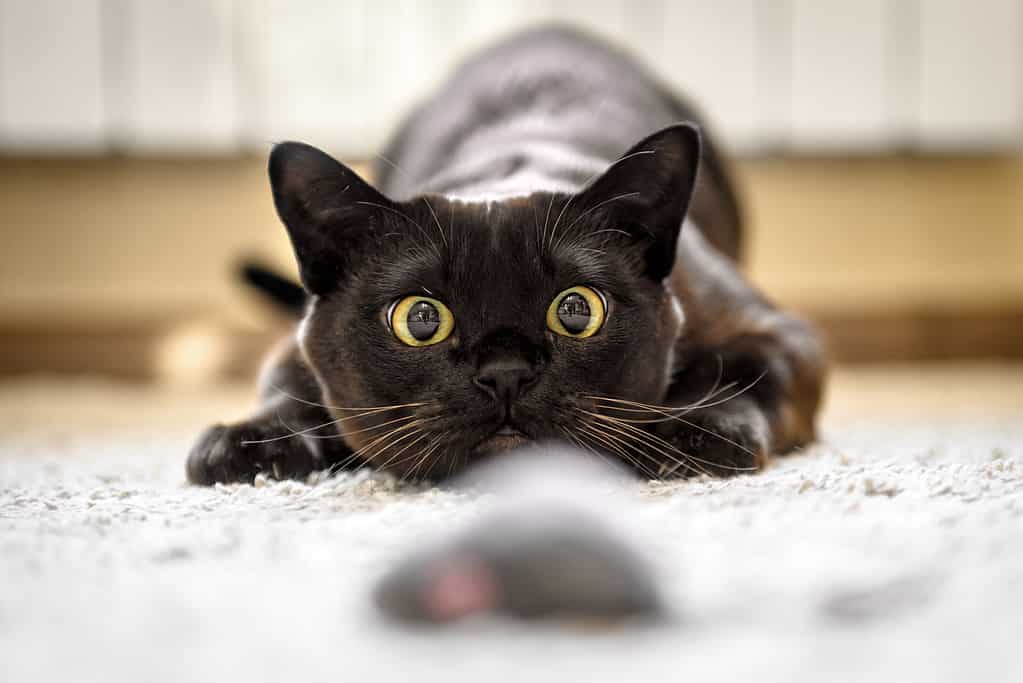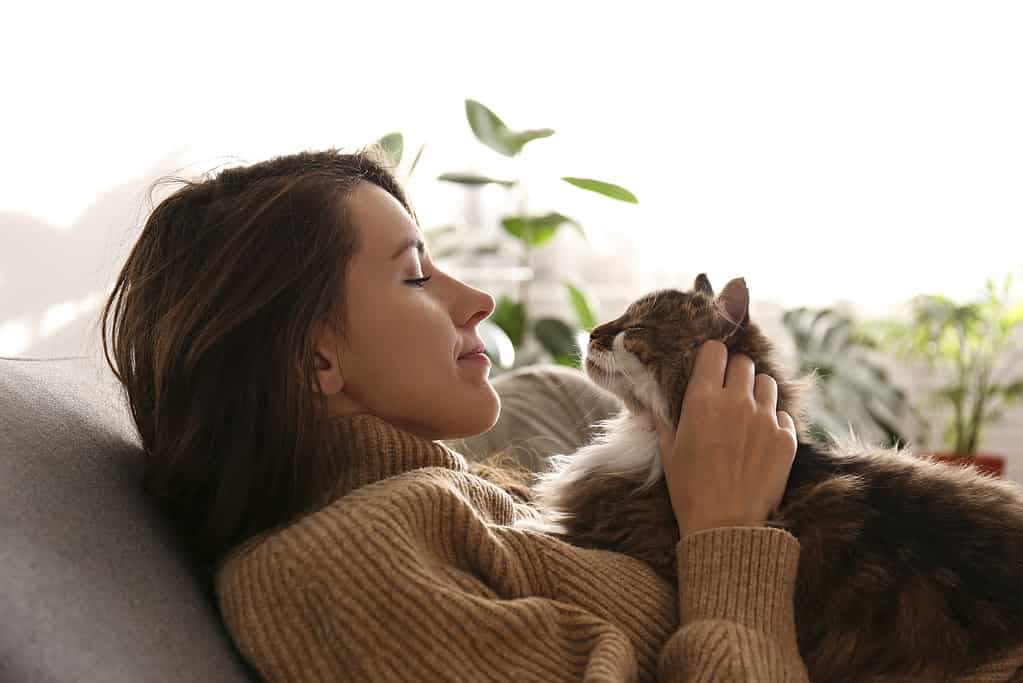We’ve all heard about how good a cat’s eyes are, especially when it comes to night vision. There are plenty of other ways that a cat’s eye is superior to humans. Vision can also be affected by genetics or health issues, so every cat won’t have the same vision as the next. It might surprise you to find out, though, that all cats are considered mid-sighted! Below, let’s explore what makes their vision so unique and if they can see objects close up.

A cat’s eyes dilate before they pounce to allow in as much light as possible so they can see better.
©scaliger/iStock via Getty Images
How Do Cats Eyes Work?
A cat’s eyes work nearly the same way as humans’ eyes. They have many of the same parts that we have and function pretty similarly. Before we go further, let’s learn about the basic parts of their eyes and how they work!
A cat’s eye sits in the orbit, the bony cavity that perfectly fits the eyeball. The white of the eye, the sclera, is a tough outer layer that maintains the shape of the eye and protects it from injuries. It’s covered in something called conjunctiva, a thin membrane that runs toward the edge of the cornea. The cornea, a dome-like structure on the front of the eye, allows light into the eye and helps your eye to focus.
Next, we have the iris, the circular, colored bit around the pupil, the black spot in the center of the eye. Behind the iris is the lens, which allows light back to the retina. Retinas have photoreceptors, called cones and rods, that sense light. A very sensitive patch in the retina called the area centralis contains thousands of photoreceptors that form the optic nerve.
Cone cells are the driving force behind a cat’s excellent visual acuity (VA), the sharpness of their vision at a distance. These cells also aid in binocular vision, allowing you to use both eyes together. Together, both of these things enable cats to judge speed and distance, creating incredible hunting abilities. Scientists are unsure which colors cats can see exactly, but this doesn’t affect how well they can see.
Rod cells are responsible for allowing a cat to see in dim light and enable them to detect motion. These cells also allow cats to perceive shapes, which is crucial in nighttime hunting. Did you know that cats have more rod cells than we do? Felines have 400,000 rods per square millimeter in comparison to 160,000 in humans.
Why Can’t Cats See Objects Close to Their Faces?
Did you know that cats are nearsighted? This means they can’t see things right in front of their faces! Anything closer than about 25 centimeters to their faces is exceptionally blurry. This is because a cat’s eyes are incredibly large in proportion to the rest of their skull. Because of this, they lack the muscles needed to change the shape of items close to their faces.
Instead, they use their whiskers to explore their surroundings and detect objects close to them. This is why your cat might not react much when you hold a treat up too close to its face. All they see is a blurry blob! Try backing away when you want to help your furry feline to identify specific objects.
How Do Cats’ Eyes Differ from Other Animals?

Cats often squint or half-close their eyes when showing affection.
©Evrymmnt/iStock via Getty Images
You might notice goats and horses have horizontal slits in their eyes or that more giant cats like lions and tigers have rounded pupils. A cat’s pupils are different from other animals. Their vertical-slit pupils allow a cat to control the amount of light entering their eyes at any given time. This will enable them to see in low light without becoming blinded by the sun, which, of course, aids their hunting abilities.
Cats also have a reflective layer behind the retina called tapetum lucidum. This biological reflector system is unique to domesticated cats! The layer magnifies incoming light and is also the reason for the reflective blue or greenish glint you see in a cat’s eyes at nighttime.
Another beneficial part of the cat’s eye is their third eyelid. It hangs out in the corner of the eye and isn’t always visible. You might not even notice it unless your cat experiences some type of trauma to their eye. This third eyelid, known as the nictitating membrane, provides extra protection to your cat’s eyes.
How Can Cat Parents Take Care of Their Pets Eyes?
It’s crucial to keep your pet’s eyes clean! Removing dirt and debris with a cotton ball or warm rag is the best way to ensure your cat won’t get infected. Doing this will help you notice if your pet has any eye issues. Below is a list of common problems cats can experience when it comes to their eye health.
- Glaucoma
- Cataracts
- Conjunctivitis
- Corneal Ulcers
- Haw’s Syndrome
- Entropion
- Horner’s Syndrome
- Keratitis
- Blepharitis
- Retinal Atrophy
The photo featured at the top of this post is © Photography by Adri/Shutterstock.com
Thank you for reading! Have some feedback for us? Contact the AZ Animals editorial team.







